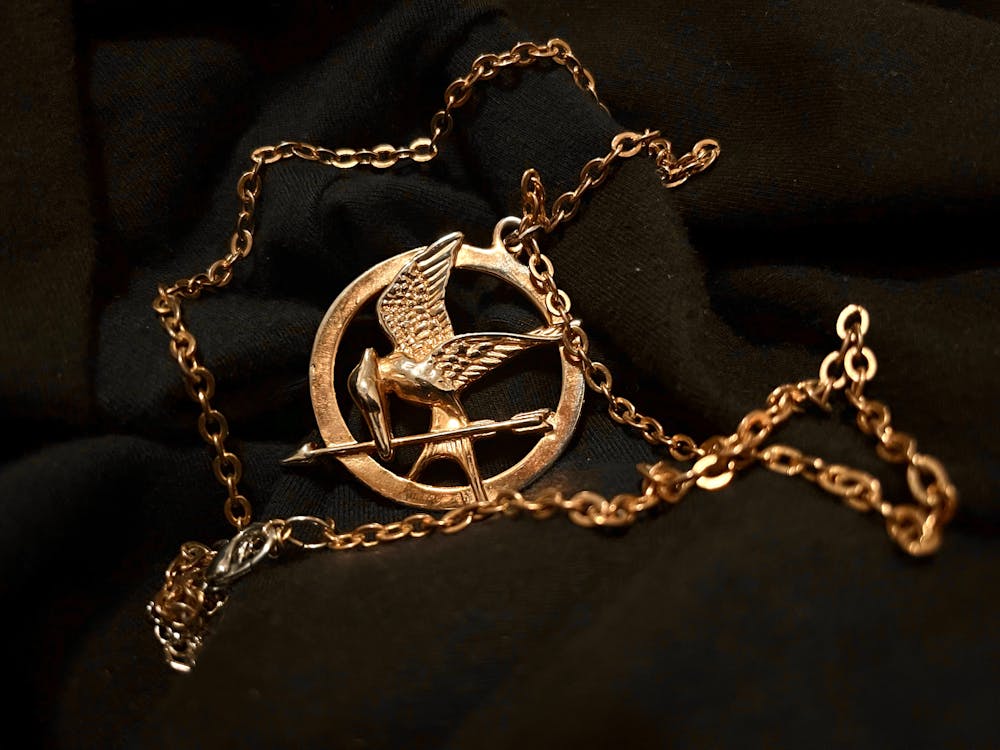When I heard that a “Hunger Games” prequel movie, “The Ballad of Songbirds and Snakes,” was coming out to theaters on Nov. 17, I did what anyone would do: I joined the loan queue for the book by Susanne Collins at the Princeton Public Library and bought a ticket to see it in theaters over Thanksgiving Break.
I’m not a strict read-the-book-before-the-movie moralist, but with the dystopian lore of Collins’ Panem, I had to give the original source matter its due. My first impression of the book — it was long. With over 500 pages divided into three parts, “The Ballad of Songbirds and Snakes” seems like a mini “Hunger Games” trilogy in itself. Yet, in contrast with the series, its plotline is more suited to the scope of one book. It follows only the 10th Annual Hunger Games, focusing solely on the villain arc of Coriolanus Snow, future President of Panem and enemy of Katniss Everdeen, as he mentors and falls in love with Lucy Gray Baird, a tribute and singer from District 12.
As I started the mighty book, I found it challenging to stay invested in Coriolanus’ story. The scenes of the prequel are action-packed, compressed, and narrated in an almost matter-of-fact, emotionless manner. I found that I simply couldn’t sympathize with the main character.
That’s the thing about “The Ballad of Songbirds and Snakes”: Coriolanus isn’t likable. He’s narrow-minded, selfish, cowardly, and morally gray. Almost every decision he makes can be pinned on financial, self-serving, and social climbing motives. He uses his “friends” without lasting guilt, charming and turning his back on his fellow students Sejanus Plinth and Clemensia Dovecote when they no longer serve his ambitions.
In fact, upon closer examination, some of his most outstanding acts of kindness and heroism can be traced to the influence of others: his cousin Tigris encouraging him to empathize with Lucy Gray, or Lucy Gray urging him to help a dying classmate. His only winning trait is his loyalty to his family. Everything he does is to preserve the sanctity of the fallen Snow name.
I get it. It’s a villain origin story. How do you inspire empathy for a villain? Some depict the villain as misunderstood, a lost soul, or a rebel shunned by a rigid society. Yet in Panem, we know that President Snow ends on the wrong side of good, so Collins faces the challenge of writing a character charming and relatable enough to carry the narrative yet selfish enough to become the cold-hearted dictator of Katniss’ world. To keep us invested, she turns to a story arc that can always hook an audience: falling in love.
Coriolanus’s love interest, Lucy Gray Baird, is far from the rebellious Katniss Everdeen. Gray is showy, determined, kind, and a little vain. Music is her comfort, not her weapon. She’s nowhere near innocent, yet with her tears she appeals to the “damsel in distress” narrative. As Lucy Gray’s mentor, Coriolanus easily slips into the protector role, giving her roses and promising to help her survive. Sparks fly.
But is it really love? Can they really know each other when they’re both acting a part to charm those around them? Can they trust each other when they’re both fighting for their own survival? I’m hesitant to call this a love story just because of a few electric kisses. At the very least, Collins’ plot effectively keeps the reader wondering if “love” can be Coriolanus’ salvation. She writes a character that isn’t quite likable or credible, but rather, perfectly placed to be both a current protagonist and a future antagonist. We know where he ends up, but we have to know how he gets there.

As far as movie adaptations go, “The Ballad of Songbirds and Snakes,” with Suzanne Collins as its executive producer, is astonishingly faithful to the book. Many key lines are drawn directly from the text, such as when Lucy Gray says, “Well, I’m not made of sugar,” and scenes are matched enough to be recognizable from the trailer. The action-packed scenes from the book transform into movie sequences which keep the audience on edge: you never know when someone might be viciously murdered, when a bomb might go off, when a snake might strike. The movie even manages to make clunky old-fashioned drones seem deadly.
The spots of comic relief from Lucky Flickerman — the weatherman and Hunger Games host — barely lighten the scenes of action and violence. It’s not a movie for the little ones. But it is a movie for the fans. With its nods to the katniss plant, “The Hanging Tree”, and the infamous mockingjay, it’s clear that the prequel comes from the same world and mind as the “Hunger Games” series.
The few sneaky but significant changes between the book and the movie point to a pattern: the book’s characters were retouched to suit a wider audience and fanbase. Most notably, Coriolanus, played by Tom Blyth, improves dramatically. All of a sudden, he heroically runs to help his dying classmate of his own volition. He doesn’t abandon Clemensia after she gets bitten by snakes; she’s written out of the storyline. Plus, she was asking for it by trying to take credit for his work. Even his friendship and “brotherhood” with Sejanus is more believable in the movie. He becomes the handsome, charming, marketable movie hero.
Lucy Gray, in turn, is reshaped into the image of a rebel by actress Rachel Zegler. With her hard glares at the Capitol’s cameras and her defiant singing, she becomes the predecessor of Katniss Everdeen. Her emotions and her suspicions play out on her face, giving us what the book could not: Coriolanus, with his blindness and his pride, saw Lucy Gray as a lamb until the end, but Zegler reveals the inner edge that makes Lucy Gray a survivor.

The casting also includes disability representation not mandated by book canon. One of the tributes is an amputee, another has Down Syndrome, and another has an eye condition. Dean Highbottom is fantastically played by Peter Dinklage, proving that inclusive casting can apply to all roles, not just those meant for little people. Altogether, these are characters we can believe in, root for, and respect as protagonists, and with these changes comes the emotional investment that the book’s narrative lacks. The musical and vocal motifs surrounding Lucy Gray effectively tug at the audience’s heartstrings, and some of the more powerful scenes made me tear up.
“The Ballad of Songbirds and Snakes” is a book that lends itself well to a visual format. If anything, it was satisfying to see the details come to life, from Lucy Gray’s rainbow dress to the beautifully decrepit arena to the sweeping majesty of the Capitol. The movie is vicious and bittersweet; it won’t make you laugh, but it may make you cry. The final dark twist and gorgeous visuals of the closing scene aptly set up Coriolanus for his future as President Snow, looking out as snow drifts over the city.
Jessica Wang is a member of the Class of 2026 and a staff writer for the Prospect at the 'Prince.' She can be reached at jessica.wang@princeton.edu.








